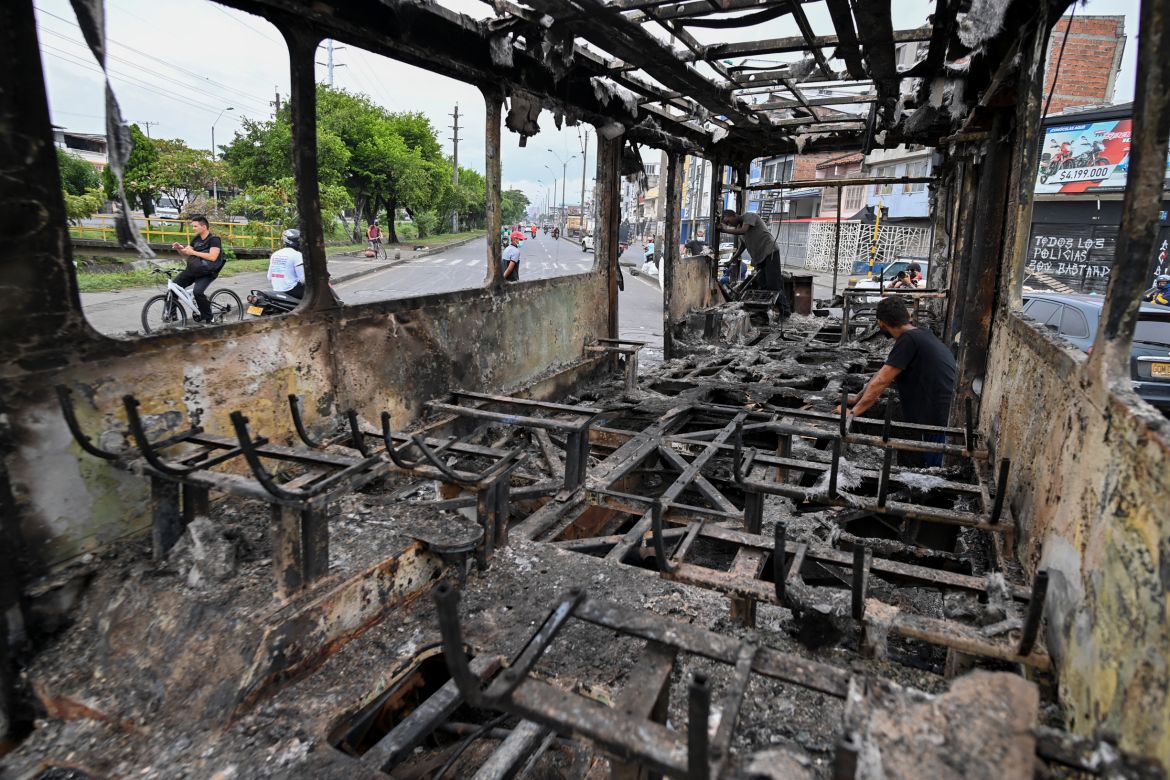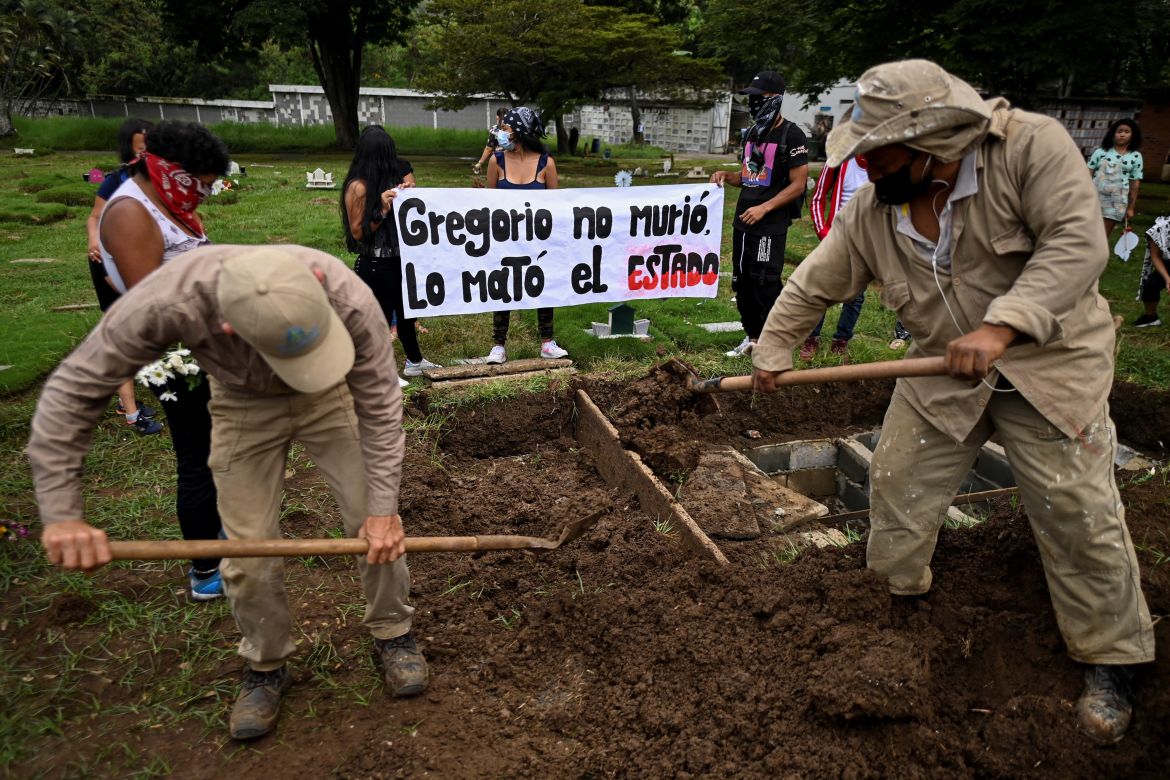In Pictures
In Pictures: Colombia protests sharpen Cali’s class war
At first, protesters saw the government as the enemy, but now they are facing wealthy, armed civilians.

In a rich neighbourhood in the Colombian city of Cali, residents standing next to police fire their weapons at protesters.
They believe they are protecting their possessions from the mob.
After 50 days of social protests against the government of right-wing President Ivan Duque, Cali’s class divide seems to be getting wider.
The southeastern city, well-known for its social inequality and racism, has been the epicentre of violent unrest during the protests.
On May 28, a mob from some of the nearby slums turned up in the affluent Ciudad Jardin neighbourhood and tried to burn down the police station.
Residents responded with gunfire.
“It was like a civil war with civilians worried for their homes and property, and the police on one side, and on the other side protesters… wanting to impose this anarchy and this chaos in our neighbourhood,” publicist Andres Escobar, 30, told AFP.
Escobar admits he fired his automatic pistol a few times “in the air” that day. It turned out to be the deadliest day of protests in the city, with 13 people killed.
That day was the most blatant example of “a conflict… marked by differences in class, differences in race and differences in ethnicity” that have been exacerbated by the pandemic, said Luis Castillo, a sociologist at the University of Valle in Cali.
With its luxury boutiques, mansions with swimming pools and palm tree-lined avenues, Ciudad Jardin resembles a mini Beverly Hills.
Almost none of the residents took to the streets to protest against Duque.
They also have not protested the widely condemned police brutality unleashed on demonstrators.
Those who first protested – initially against a now-withdrawn tax reform proposal – on April 28 were mostly unions and students demanding a change of government.
But for the first time, young Black and mixed-race people from poor neighbourhoods joined in.
In Cali, where the poverty rate of 67 per cent is much higher than the rest of the country, there is a clear “racial segregation”, said Castillo.
That helps explain why poor, Black neighbourhoods rose up after the pandemic hit the informal sector hard.
The protesters AFP spoke to were aged between 15 and 35, and either work in the informal sector, are unemployed or are students.
They are demanding jobs, education and health services.
Some cook and others draw outlines of dead companions on the floor, as they all listen to reggaeton and smoke to while away the hours.
They claim to have weapons but can only show homemade shields, sticks and stones.
These people are tired of “seeing families in misery”, said Plein, the coordinator of the “front line” at the Puerto Madera roadblock, who was shot during clashes with police.
“We want the rights that those with a bit of money have to be the same as the poor,” said Plein.








